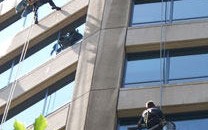Insurance for Painters
If you’re a self-employed painter, one of the most important forms of insurance you need to consider is public liability.
Public liability insurance can protect a painter from a range of risks relating to property damage and personal injury, and in many cases it will be mandatory in order to enter a worksite.
In this guide we will take a looking at the various forms of insurance that painters can benefit from, with a particular focus on public liability cover.
What is Public Liability Insurance?
Public liability is a type of business insurance that protects owners in the event that the activities of their business result in property damage or personal injury to another person.
If another person such as a client or member of the public suffers a loss due to your negligence, you can be found liable for that loss and therefore financially responsible for it.
Usually this cost would need to be covered by you or your company (depending on your business structure), however with public liability insurance in place you can have the claim settled by the insurer instead.
Examples of Claims
For a painter there are dozens of different incidents that could result in a public liability claim. Some of these can be fairly minor, whilst others can be very serious in terms of the money involved.
The first example we will look at involves property damage. In this case a painter smashed a large pane of glass whilst carrying a ladder into a customer’s house.
The painter was found to be responsible for the damage, and his public liability policy covered the $1,400 cost of replacing the glass.
The second example involves personal injury. In this case a painter left some trestles in front of a customer’s front door. When the elderly occupant exited their house they tripped over the unsighted trestles and suffered serious injuries.
The painter was found to be responsible for the injuries as they had acted negligently in leaving the trestles in such a location without any type of visual warning.
Thankfully the customer’s sizable medical and rehabilitation costs were covered by the public liability insurer rather than coming out of the painter’s own funds.
Which Painters Need It?
Any painter who works for their own business or for others as a subcontractor should have public liability insurance.
Whilst the cover is not mandatory from a legal perspective for a painter, many building and construction companies will require that subcontractors have insurance in place before being allowed onto a worksite.
Painters Insurance Cost
For a sole trader working on painting projects no higher than ten metres the cost of the insurance will be very affordable, starting at around $450 for $5 million cover.
The public liability insurance cost can differ depending on a number of other factors however.
For example if you have multiple staff, high annual turnover, work at heights or in high risk locations, the cost of your insurance can be a little or a lot higher depending on the circumstances.
Other Forms of Cover
Although public liability is certainly the most common form of painters insurance, there are other forms of cover that should be considered.
General property insurance (commonly known as tool insurance) is very popular within painters, and can be included in a public liability policy for a small additional fee.
Self-employed painters should also consider income protection and life insurance. For these covers you should seek advice from a qualified financial adviser.
More Information
If you would like more information on painters insurance, or if you would like a to obtain a quote on your cover, you can get in contact with us via the contact form or our online quote request form.
Having the right insurance in place is important for any painting contractor or business owners, and if you do your homework you can protect yourself with quality cover at a affordable price.



